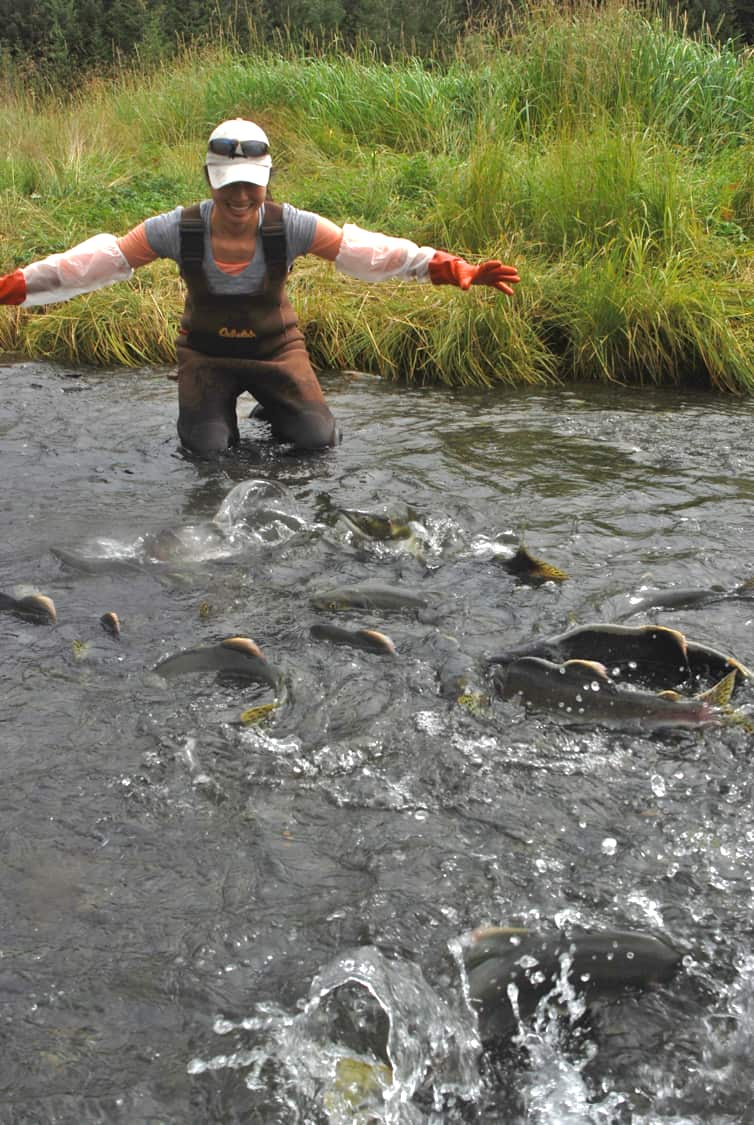When Fate Has Flippers: Ayaka Asada ‘20, Ph. D.
 Asada
Asada It was on a tiny, remote island archipelago off the coast of Tokyo, Japan, that Ayaka Asada ‘20 met Texas A&M University at Galveston Department of Marine Biology Regents Professor Dr. Randall Davis ten years ago.
Asada was working as a field biologist on the green sea turtle and humpback whale conservation project at the Ogasawara Marine Center when Davis, who was conducting sperm whale research nearby, stopped in for a visit. Asada was tapped to translate for Davis, and the rest is history.
“It really does feel like a mystical or fateful coincidence for me because the island was really difficult to get to, you have to ride a special ferry of which there’s only two per week, there’s no airport, so you have to really want to go there,” Asada explained.
During his visit, Davis and Asada spoke at length about her interest in going back to school for her Ph. D. Davis knew Texas A&M-Galveston would be an ideal fit for Asada, but there unfortunately weren’t any doctoral program openings at the time. So Davis and Asada kept in touch over the next year and a half until finally, a spot for her came available.
“I’d always loved being around oceans and had an interest in conservation biology. I had no direct marine biology background, my bachelor’s degree is in fisheries and wildlife from Michigan State, so I had that fundamental understanding, and Randy worked with me on the rest.”
“The rest” took Asada on journeys she’d never imagined before finishing her doctoral dissertation, “Diving Behavior and Internesting Movements of Leatherback Sea Turtles in U.S. Virgin Islands.”
On the island of St. Croix, Asada worked through many nights alongside other interns of the Sandy Point National Wildlife Refuge Leatherback sea turtle project, Davis and leatherback sea turtle pioneer Dr. Scott Eckert of Principia College. As many sea turtle species nest at night, Asada said the crew would often work 6 p.m. to 6 a.m. to study the massive animals, gather biological data and attach and deploy them with video-data recorders and satellite tracking devices.
Leatherbacks are the largest of all seven sea turtle species, often weighing in anywhere from 550 to upwards of 1,500lbs and measuring up to seven feet in length.
“They are just gigantic. I mean, this animal survived the dinosaur era,” Asada said with awe.
She explained they are the “deep divers” of the sea turtles, so studying the diving behavior and physiological mechanisms that allow them to reach depths of over 4,000 feet was riveting.
“Hearing their breathing and observing their nesting activity and being right next to them was breathtaking and absolutely amazing. It’s such a resilient animal, too, it made my problems seem so small in comparison to their life history and biology,” she said with reverence.
Another academic adventure took her to the colder shores of Alaska.
For five summers she would accompany Davis and students participating in his marine biology field course in Prince William Sound. Asada served as a teaching assistant for the course, which centered on studying sea otter behavior and abundance.
Not only that, Asada also did salmon research alongside Alaska’s Department of Fish & Game. She and other graduate students and science teams studied how wild salmon were interbreeding with hatchery-born salmon among a number of woodland streams.

“Some of the locations were quite difficult to get to,” she said with a laugh. “You had to camp, and carry everything via a small inflatable kayak to where spawning events were happening. It was kind of crazy but just incredible, you could even hear seal calls sometimes.”
Davis said nothing could stand in the way of Asada and her goals.
“Ayaka has true Yamato-damashii (大和魂) fighting spirit in all her endeavors,” he said, emphasizing Asada’s strength of purpose and spirit.
These experiences helped Asada to realize the crucial importance of environmental conservation from the perspective of a researcher and in a more commercial-oriented light.
From the industry side, Asada said there is a need to have more conservation-minded people and scientists involved to steer environmentally-friendly investment strategies and goals.
“Big business, I believe, has the power to do this, to help speed up conservation efforts. I do love fieldwork, but with this degree I want to see what I can do in this part of society to help. Money is such an important element of research, we’re seeing companies invest more in the earth and working with the government to help mitigate future disasters, which is so important.”
After earning her Ph. D. on Saturday, the only doctoral student graduating Texas A&M-Galveston in December plans to do just that at her new job with the Nobilis Pipe Company.
Asada will be working as a research analyst and environmental science communications specialist to help the company better understand and undertake eco-friendly, sustainable business practices.
“Conservation has always been my passion. I wish we as human beings could give up so much but we don’t and we can’t in many circumstances, so we must continue to strive for coexistence with wildlife. In that way, I hope my work and research can truly help do good.”
Media Contact
Andréa Bolt
Marketing and Communications
a_bolt@tamug.edu
409.740.4929